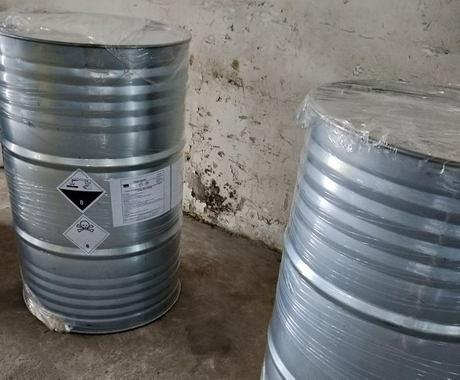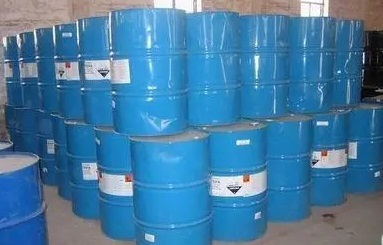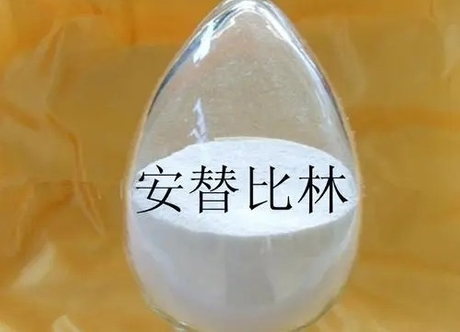Natural cellulose is the most widely distributed and abundant polysaccharide in nature. The modification technology of cellulose mainly focuses on etherification and esterification. Carboxymethylation reaction is one of etherification techniques. Carboxymethyl cellulose (CMC) was obtained after Cellulose being carboxymethylated, its aqueous solution has thickening, film formation, adhesion, water retention, colloidal protection, emulsification and suspension, and other functions, widely used in petroleum, food, medicine, textile and paper industry, is one of the most important cellulose ether.
Carboxyl methyl Cellulose

Abbreviation: CMC
Synonymous Name: carboxy-methyl cellulose; carboxymethyl cellulose; cellulose carboxymethyl ether; cmc-4lf; carbose; carboximethylcellulosum; carboxymethyl cellulose ether; carboxymethylated cellulose pulp; carboxymethylcellulose; carboxymethylcellulosum; carmellose; carmellosum; carmelosa; cellulose gum 7h; cellulose carboxymethylate; cellulose, (carboxymethyl); cellulose, ether with glycolic acid; celluloseglycolic acid; colloresine; croscarmellose; croscarmellosum; cm-cellulose; FEMA No. 2239; Duodcel; Glycocel TA; hexose - acetic acid (1:1)
CAS No.: 9000-11-7; 177317-30-5; 191616-54-3; 196886-89-2; 204336-41-4
Molecular Formula:[C6H7O2(OH)2CH2COONa]n
Reaction Principle
The main chemical reaction of CMC is the alkalization reaction of cellulose and alkali to form alkali cellulose and etherification reaction of alkali cellulose and monochloroacetic acid.
Step 1: Alkalization: [C6H7O2(OH) 3]n + nNaOH→[C6H7O2(OH) 2ONa ]n + nH2O
Step 2: Etherification: [C6H7O2(OH) 2ONa ]n + nClCH2COONa →[C6H7O2(OH) 2OCH2COONa ]n + nNaCl
Physical Property
Sodium carboxymethyl cellulose (CMC) is an anionic cellulose ether, the appearance of white or slightly yellow flocculent fiber powder or white powder, odorless, tasteless, non-toxic; Easy to dissolve in cold or hot water to form a clear solution with a certain viscosity. The solution is neutral or slightly alkaline, insoluble in ethanol, ether, isopropanol, acetone and other organic solvents, soluble in 60% water alcohol or acetone solution. It is hygroscopic, stable to light and heat, and the viscosity decreases with the increase of temperature. The solution is stable at PH 2 ~ 10, and the PH is lower than 2, and solid precipitation occurs, and the viscosity decreases when the PH is higher than 10. The discoloration temperature was 227℃, the carbonization temperature was 252℃, and the surface tension of 2% aqueous solution was 71Mn/N.
Chemical Property
The cellulose derivatives of carboxymethyl substituent were prepared by treating cellulose with sodium hydroxide to form alkali cellulose and then reacting with monochloroacetic acid. The glucose unit of cellulose consists of three substitutable hydroxyl groups, so that products with different degrees of displacement can be obtained. Average per 1g dry weight into 1mmol carboxymethyl, in water and dilute acid insoluble, but swelling, used for ion exchange chromatography. Carboxymethyl pKa in pure water is about 4, in 0.5mol/L NaCl is about 3.5, is a weak acid cation exchange agent, usually more than pH4 for the separation of neutral and basic proteins. More than 40% of the hydroxyl group for carboxymethyl replacement can be dissolved in water to form a stable high viscosity colloidal solution.
Main Uses
Carboxymethyl cellulose (CMC) is a non-toxic and tasteless white floc powder, stable performance, easy to dissolve in water, its aqueous solution for neutral or alkaline transparent viscous liquid, soluble in other water-soluble gum and resin, insoluble in ethanol and other organic solvents. CMC can be used as binder, thickener, suspension agent, emulsifier, dispersant, stabilizer, sizing agent, etc.
Sodium carboxymethyl cellulose (CMC) is the largest yield of cellulose ether, the most widely used, the most convenient use of products, commonly known as "industrial monosodium glutamate".
1.Used for drilling and digging Wells of oil and natural gas
(1) CMC mud can make the borehole wall form thin and firm, low permeability filter cake, so that the loss of water to reduce.
(2) after adding CMC in the mud, the drill can get a low initial shear force, so that the mud is easy to release the gas wrapped in it, at the same time, the debris quickly abandoned in the mud pit.
(3) Drilling mud and other suspended dispersion, has a certain period of existence, adding CMC can make it stable and prolong the existence period.
(4)Mud containing CMC is rarely affected by mildew. Therefore, it is not necessary to maintain a high PH value nor use preservatives.
(5)CMC containing CMC as drilling mud cleaning fluid treatment agent can resist pollution of various soluble salts.
(6) CMC containing mud, good stability, even at a temperature of more than 150℃ can reduce water loss.
CMC with high viscosity and high degree of substitution is suitable for mud with low density, while CMC with low viscosity and high degree of substitution is suitable for mud with high density. CMC should be selected according to mud type, area, well depth and other different conditions.
2. for textile, printing and dyeing industry textile industry CMC as sizing agent, used for cotton, silk and wool, chemical fiber, blending and other strong materials of light yarn sizing;
3. for the paper industry CMC in the paper industry can be used as paper surface smoothing agent, sizing agent. Adding 0.1% ~ 0.3% CMC in the pulp can increase the tensile strength of the paper by 40% ~ 50%, the compressive rupture degree increases by 50%, and the kneading increases by 4 ~ 5 times.
4. CMC added into synthetic detergent can be used as dirt adsorbent; Daily chemical such as toothpaste industry CMC glycerin water solution used as toothpaste gel base; Used as thickener and emulsifier in medical industry; CMC aqueous solution is used for flotation separation after viscosity increase.
5. used in the ceramic industry can be blank adhesives, plasticizers, glazes suspension, fixing agents.
6. Used in buildings to improve water retention and strength
7. for the food industry, the food industry uses high replacement degree CMC for ice cream, canned, quick cooking noodles thickening agent, beer foam stabilizer, etc., in processed jam, sugar juice, fruit juice, snacks, ice cream drinks as thickening agent, binder or due to the shape of the agent.
8. the pharmaceutical industry to choose the appropriate viscosity CMC as a tablet of adhesive, disintegrating agent, suspension of suspension aid, etc.
Extension:
Carboxymethyl cellulose (CMC) high-end alternative products for polyanionic cellulose (PAC) is also an anionic cellulose ether, with a higher degree of substitution and substitution uniformity, molecular chain is shorter, the molecular structure is more stable, so it has better salt resistance, acid resistance, calcium resistance, high temperature performance, solubility is also enhanced. Applied to all industries where carboxymethyl cellulose (CMC) can be applied, it can provide better stability and meet higher process requirements.
Dissolution Methods
CMC will be directly mixed with water, prepared into a paste gel solution, standby. In the configuration of CMC glue paste, a certain amount of clean water is first added into the mixing tank with a stirring device. In the case of starting the mixing device, CMC is slowly and evenly spread into the mixing tank, and stirring continuously, so that CMC and water can be fully integrated and CMC can be fully dissolved. In the process of dissolving CMC, the reason for uniform scattering and continuous stirring is to "prevent the occurrence of clumping, clumping and reducing the amount of CMC when CMC meets water", and to improve the dissolution rate of CMC. The stirring time and the time for the complete dissolution of CMC are not consistent, they are two concepts. Generally speaking, the stirring time is much shorter than the time for the complete dissolution of CMC, and the time required by the two depends on the specific situation.
The basis for the determination of stirring time is: when CMC is evenly dispersed in water and there is no obvious large mass object, stirring can be stopped, so that CMC and water can permeate and merge with each other in the state of standing.
The basis for determining the time required for the complete dissolution of CMC is as follows:
(1) CMC and water are completely bonded, and there is no solid-liquid separation between them;
(2) The mixed paste is uniform and uniform with smooth surface;
(3) The color of the mixed paste is nearly colorless and transparent, and there is no granular object in the paste. It takes 10 to 20 hours from the time when CMC is put into the mixing tank and mixed with water to the time when CMC is completely dissolved.
Storage Transport
Attention should be paid to damp proof, fire proof and high temperature when the product is stored. It should be stored in a ventilated and dry place.
Rain proof during transportation, iron hook is strictly prohibited in loading and unloading. Long-term storage of this product combined with heap pressure, unpacking may occur lumps, will cause inconvenience to use but will not affect the quality.
When the product is stored, it is strictly prohibited to contact with water, otherwise it will be gelatinized or partially dissolved and cannot be used.




